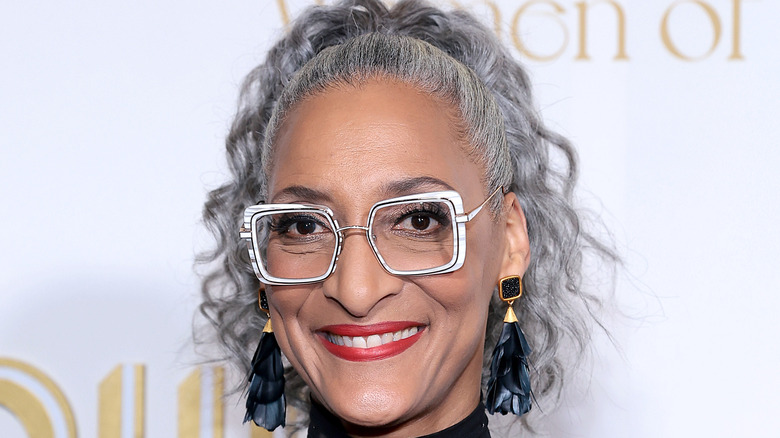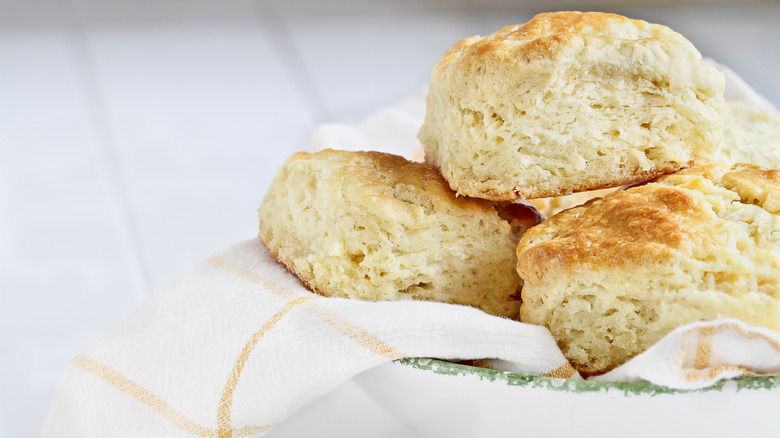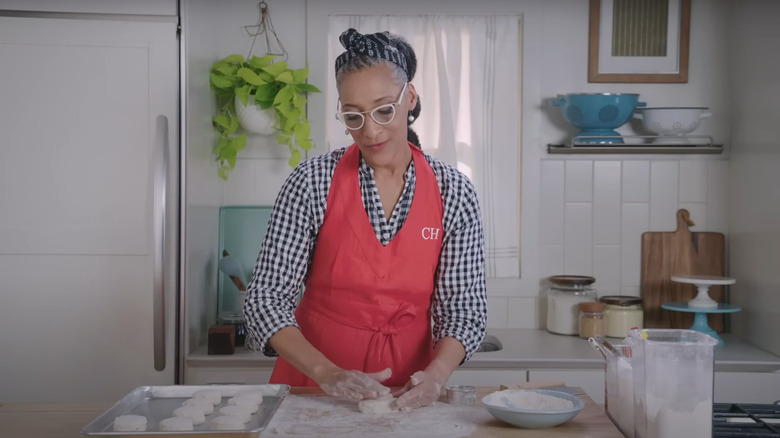Carla Hall's Tip For Flakier Biscuits Is A Must-Try
There are many types of bread you can make with just flour, water, and yeast, but biscuits aren't one of them. Butter is a key ingredient in most biscuit recipes, and if there's no butter, there's either margarine or shortening. Not only does the fat largely contribute to the flavor of a biscuit, but it's also responsible for its signature soft, flaky texture. As the Institute of Culinary Education explains, butter acts as a barrier against the formation of gluten.
Normally when flour is combined with a liquid, gluten begins to develop, but because biscuit dough contains so much butter, the flour particles are protected even when you add the buttermilk. The more gluten that develops, the tougher the biscuit will be (per Quaker Oats). Therefore, if you want to end up with tender, fluffy biscuits, you'll want to make sure the butter is well dispersed but that the dough isn't overworked. It might seem like one would cancel out the other, but according to celebrity chef Carla Hall, there's an approach that makes this process a lot more foolproof.
Carla Hall uses both butter and shortening in her biscuits
Some people swear butter produces better biscuits, while others claim shortening works best. The fact of the matter is both have their advantages. According to Southern Kitchen, shortening does a better job at preventing gluten from developing because it's 100% fat, whereas butter contains water and milk solids. Ironically, butter's composition is what makes it superior in taste. Butter may have less fat, but per King Arthur Baking, these milk solids caramelize during the baking process, giving biscuits a distinct flavor you can't get from shortening. This caramelization also gives biscuits a golden flaky crust on top. Shortening and butter individually will yield delicious results, but there's no reason you can't use both, Carla Hall says.
Hall's biscuit recipe calls for a 1:4 ratio of shortening to butter — or 2 tablespoons of shortening for every stick of butter. This combination, she explained to Food & Wine, makes for the best balance of buttery flavor and flaky texture.
How Carla Hall adds butter and shortening to biscuit dough
Whether you use butter, shortening, or both, there's always a risk of overmixing and ultimately toughening the biscuit dough. The easiest way to circumvent this, Carla Hall says, is to never actually mix the dough at all (via Food & Wine). Instead, Hall suggests first incorporating shortening by pinching it into the flour until the dough is crumbly, then adding the butter by grating it into the mixture, and lightly tossing it to combine.
For best results, the celebrity chef recommends using frozen instead of cold butter. As she explained for Food Network viewers (via YouTube), this makes it easier to grate, but at the same time, it allows the biscuits to bake more effectively. "The reason that you want really cold butter is because butter has water in it, and that water creates steam in the oven," Hall shared in the video. The water is what helps biscuits puff up in the oven and stay moist, so you'll want to make sure the butter shards are distributed evenly. Combined with shortening's gluten-inhibiting properties, you'll end up with the perfect biscuits every time.


